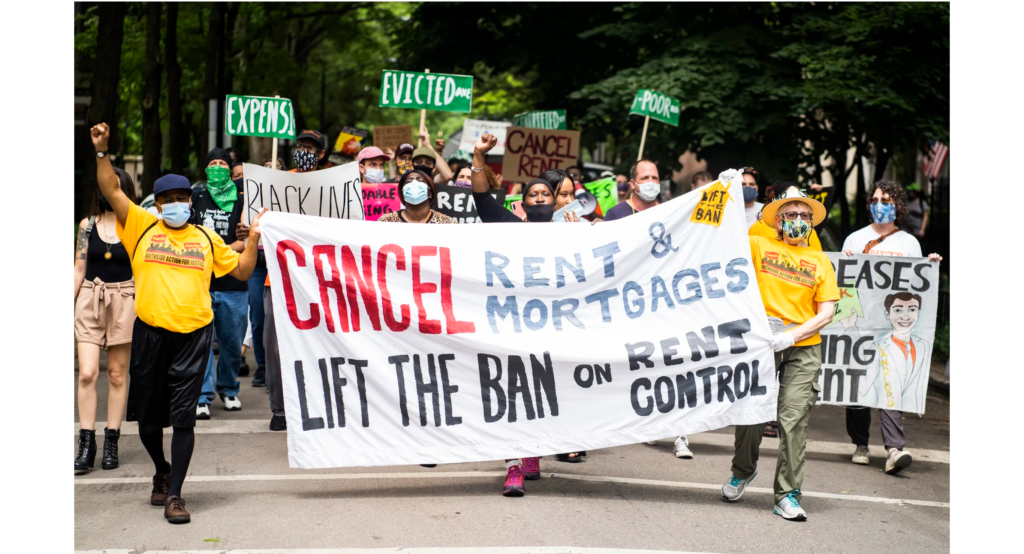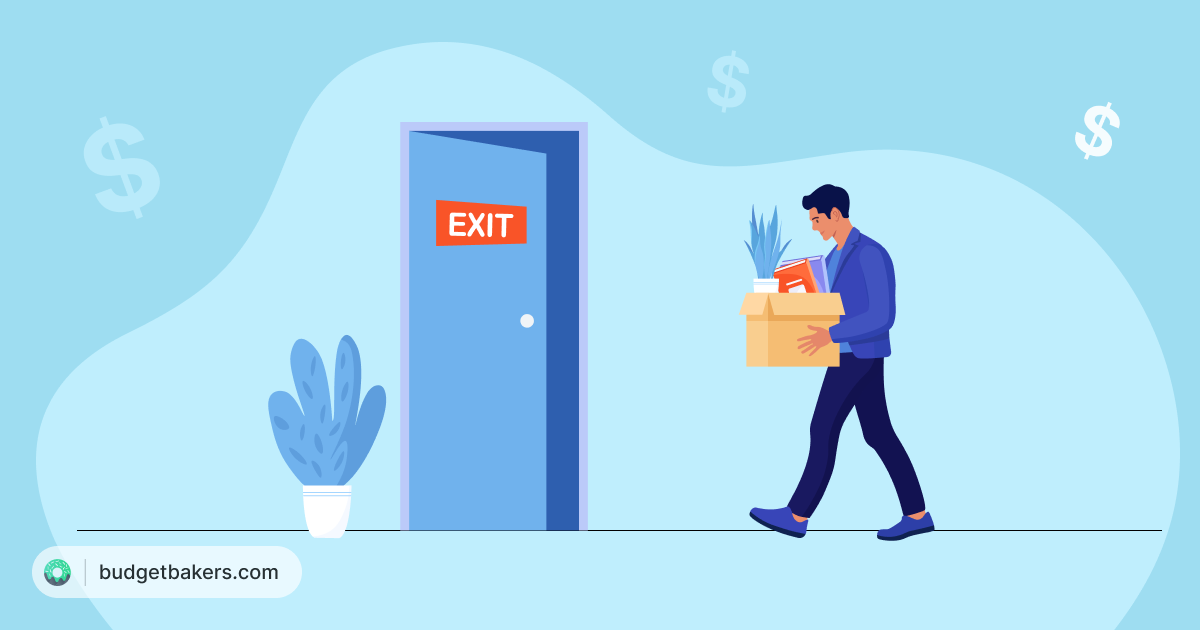Written and fact-checked by business journalist
Leonie Bauer
Rents are soaring. Nationwide, they just topped $2,000 on average for the first time, up nearly $300 (11,6%) from a year ago. In some cities, such as Miami, Tampa and Austin, the increase was as high as nearly 50%. Economists and politicians have therefore declared a national rental housing crisis.
Today’s price increases are having a significant impact on the budgets of most Americans – especially since the beginning of the year.
In the first six months of 2022, the average US household spent 33.1% of its budget on rent. Sounds like a lot? It is. Financial experts say that tenants should only spend about 25% to 30% of their monthly income on housing. This is especially true in times of inflation, when all daily necessities are already expensive anyway.
Source: Redfin analysis of asking rents
To cope with current high costs and keep your rent in check, it’s crucial to understand the causes of ever-increasing rents. This is what I want to do with this article, highlighting the reasons for today’s housing crisis. Factors include supply and material shortages due to the COVID-19 pandemic and inflation-driven rising real estate prices that are spilling over into the rental market.
Why are Rents so Expensive?
Let’s start with the basic question: What happened to the U.S. rental market? The answers are many, but most economists agree that both the pandemic and supply-and-demand constraints play a major role in the rise in rents. Here’s why.

The COVID-19 Pandemic
First, there’s the pandemic. In 2020, many, especially young people, didn’t enter the housing market because online university lectures or lack of work made them stay with their parents. Those who had already moved out moved back into their childhood homes. Friends and families banded together, moving under one roof for fear of lockdowns.
The result was a sharp drop in demand. And a temporary paradise for all remaining apartment seekers. They suddenly had a wide choice of affordable rental housing and were able to take advantage of discounts as landlords desperately sought renters for their empty apartments. But those favorable conditions have now largely disappeared, as you can see in the table below from Apartment List.
Source: Apartment List Rent Estimates
People who were living with their families or friends in 2020 now want to live in their own homes. This is especially true for Gen Z adults, who are confident enough to leave their parents’ homes to move to college towns. Thus, the number of young people living alone nearly doubled from January 2020 to January 2022. This has led to an unprecedented growth in the total number of households.
But it’s not just young people who are looking for rental apartments. Families are also flocking to the housing market. They need more space, and remote work allows them to move to other cities – especially mid-sized cities in the Southwest and Sunbelt – that until recently were considered somewhat affordable. But here, rents are rising even faster than in metropolitan areas like San Francisco, Los Angeles and New York City.
These changes in the housing market, i. e. extremely high demand for rental housing, are due in large part to the COVID-19 pandemic. But there is another reason for the rising need for rentals – high real estate prices and high interest rates.
Real Estate Prices and Interest Rates
For several months now, the news has been telling us what friends and neighbors have been complaining about since last year: real estate prices are skyrocketing and adequate financing is virtually impossible due to ever-increasing mortgage rates. But why is that? And what do these price increases have to do with the rental housing market?
Let’s take another look at the pandemic years in 2020 and 2021. After the outbreak of the COVID-19 virus, interest rates were lowered to stimulate the economy. While demand for rental housing declined during the pandemic, the sharp drop in interest rates has prompted many Americans to buy a home. This is because those low interest rates reduced the cost of financing a home, and more people chose to buy property.
Now that the worst of the pandemic is over, the tide has turned. As described above, a large number of Americans are looking for housing. But many suddenly can no longer afford to buy their own home. That’s not only because of high real estate prices, but also because of a sharp rise in mortgage interest rates.
Over the past year, mortgage rates have risen from just under 3% to 5.8% in September 2022. Doubling in one year is extreme; it’s one of the fastest rate increases in recent American history.
Who is “to blame”? Most of all the Federal Reserve Bank or “The Fed” – the national central bank – which controls the circulation of money and interest rates in the US. Its goal is to curb inflation by raising interest rates. We will explain why and how in the next chapter.
For now, what’s important to keep in mind regarding today’s expensive rents is that both rising home prices and high interest rates are forcing many Americans to move into rental housing rather than purchase a home. This immense demand has led to the current boom in the housing market and an unprecedented increase in rents.
Inflation
As mentioned above, inflation also plays a role in the increase in rents. I won’t go into too much detail on the subject of inflation in this article. My colleague Lloyd Waldo has already covered this topic in his post on the causes and consequences of inflation.
He described the connection between the current price hikes and the housing crisis as follows:
When inflation is rising, they (the Fed) can encourage banks to stop lending out money, by raising interest rates, causing these banks to want to save money because the interest rates are attractive. This is why interest rates on everything from credit cards to mortgage loans have been rising quickly over the past 6 months. As inflation increases, the Fed can raise interest rates to discourage consumers from borrowing money (thus discouraging us from spending more), and encourage banks to save more money and loan less.
(BudgetBakers, June 2022)
So in order to fight price increases, the Central Bank is raising interest and mortgage rates. This affects the cost of borrowing for items like credit cards, car financing, and adjustable rate mortgages. As a result, former potential homebuyers are looking for housing in the rental market instead of the real estate market, leading to high demand.
In addition to this, inflation has a major impact on property prices. History has shown that housing prices rise with inflation, so owners experience an increase in value. And prospective house buyers and renters experience a rise in prices.
In addition, homeowners who sublet their property try to compensate for inflation-related price increases. These include, above all, the cost of repairs incurred on the house. As many goods and materials have become more expensive, landlords are raising rents to contain their expenses. So it’s the tenants who cover additional costs through the increased rent.
Speaking of goods and materials. These, like almost everything else in the past year, have become significantly more expensive. The reasons for this are shortages and bottlenecks, which we’ll get to in the next chapter. You’ll see that shortages and resulting price increases not only raise costs for homeowners and tenants, but also tighten the supply of housing.
Supply Bottlenecks
The growth in rents depends a lot on the great demand, but also on the supply. And this is currently quite limited. A report by the National Association of Realtors shows how many prospective buyers have been forced out of the real estate market since the beginning of 2021. Sales to first-time homebuyers fell to 27% in January 2022 – normally they account for about 40% of sales. In total, over nine million people were pushed out of the real estate market. At the same time, the nationwide supply of new rental housing increased by only 330,000.
How is this possible? The answer is largely a story of supply, or rather, supply shortage. Two years after the outbreak of the pandemic, the world is still suffering from supply chain issues, material shortages and a lack of manpower, which means a dramatic shortage of affordable housing.
Not all building materials are manufactured in the US and must often be imported from other countries. The prices of certain imports have changed throughout time as a result of inflation and trade agreements. In the housing market, this has led to an increase in construction costs. Many materials are more expensive than before due to rising prices and customs duties.
In view of the market uncertainty, new construction activity has therefore slowed down. Lending for new buildings is declining and with it new construction activity. So there are very few properties on the market and therefore less rental housing.
With the number of available apartments at record lows, rental costs have skyrocketed. Lower vacancy rates have led to higher rents because landlords know that tenants are having difficulty finding housing.


